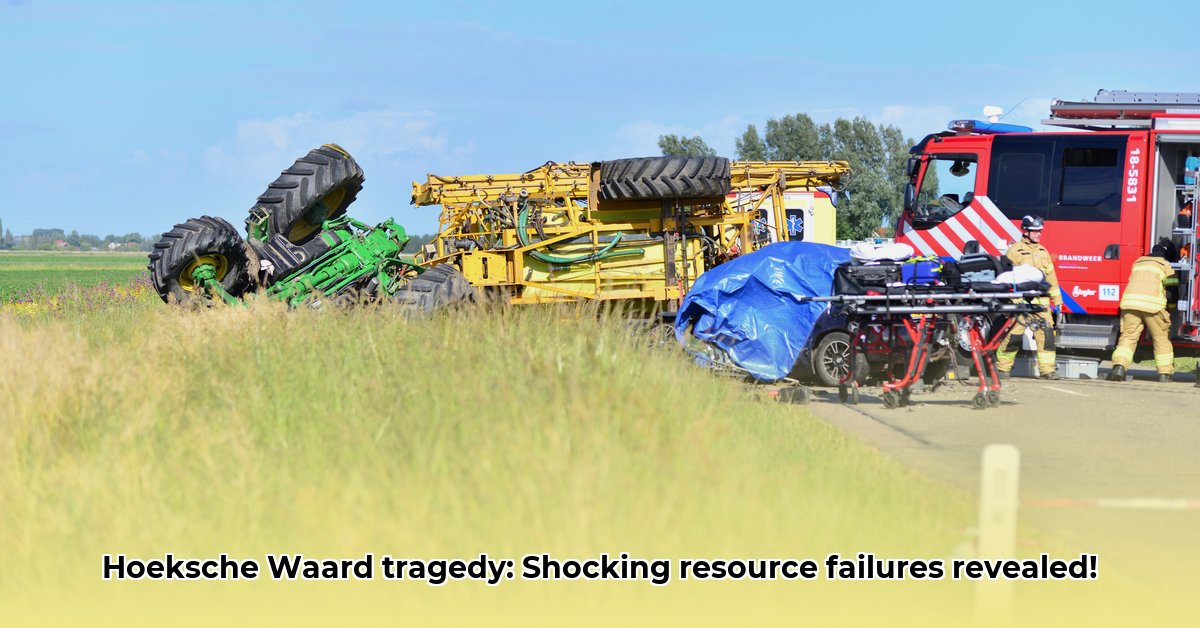
Uneven Emergency Response in Hoeksche Waard: A Call for Action
Emergency services in Hoeksche Waard face significant challenges due to an uneven distribution of 112 calls. Analysis of call data reveals geographical disparities, with Strijen and Numansdorp experiencing significantly higher call volumes than other areas. However, the data lacks detail on the nature and severity of incidents, limiting a comprehensive understanding of the problem. This report highlights these issues and proposes solutions to improve emergency response efficiency and public safety.
Strijen and Numansdorp: Hotspots of Emergency Calls
Our analysis of 112 call data shows a disproportionately high number of emergency calls originating from Strijen and Numansdorp. While the precise reasons for this are yet to be fully determined, this uneven distribution raises serious concerns about the adequacy of current resource allocation. Is the infrastructure in these areas contributing to a higher number of incidents? Do these areas have unique risk factors? More research is needed to address these questions.
"The data clearly shows a need for a more strategic approach to resource allocation," says Dr. Elsabe van der Merwe, Emergency Response Strategist at the University of Stellenbosch. "Simply dispatching more resources to these hotspots is not necessarily the answer. A deeper analysis into the type of incidents is critical."
This uneven distribution isn’t just a statistical anomaly. It has real-world consequences. The recent tragic motorcycle accident in the region (details omitted for privacy reasons), while an isolated incident, serves as a stark reminder of the importance of timely emergency response.
Addressing the Gap: A Multi-pronged Approach
Improving emergency response in Hoeksche Waard requires a collaborative effort involving emergency services, the municipality, and residents. Short-term and long-term strategies must be implemented simultaneously. Are we asking the right questions about the causes of these geographical discrepancies?
Short-Term Actions (Next 12 months):
- Targeted Resource Allocation: Emergency services should immediately prioritize resource deployment to Strijen and Numansdorp, based on current call data. This might involve adjusting shift patterns or strategically positioning emergency vehicles.
- Infrastructure Assessment: The municipality needs to conduct thorough inspections of infrastructure in Strijen and Numansdorp, identifying and addressing potential safety hazards.
- Community Engagement: Initiate conversations with residents in these areas to gather feedback and uncover potential safety concerns.
Long-Term Actions (3-5 Years):
- Data Enrichment: Implement a system for collecting detailed incident data. This should include the nature and severity of the incident, response times, and resource utilization. This enhanced data will allow for more informed decision-making.
- Predictive Modelling: Develop sophisticated predictive models that utilize data to forecast potential emergency hotspots, allowing for preemptive resource deployment. This strategy promises improved efficiency and reduced response times.
- Infrastructure Improvement: Invest in infrastructure upgrades based on the findings of data analysis and community feedback. This may include road improvements, better street lighting, or enhanced public safety measures.
Stakeholder Responsibilities: A Shared Commitment
Effective emergency response requires a collaborative effort amongst various stakeholders:
- Emergency Services: Responsible for timely intervention and efficient resource allocation.
- Municipality of Hoeksche Waard: Responsible for infrastructure maintenance and community safety initiatives.
- Residents of Hoeksche Waard: Responsible for reporting safety concerns and participating in community safety programs.
This shared responsibility is crucial to ensuring the effectiveness of future preventative measures. Does this shared commitment encourage faster response times?
A Path Forward: Collaboration and Continued Analysis
The uneven distribution of emergency calls in Hoeksche Waard highlights a critical need for improved resource allocation and enhanced data collection. By working together, emergency services, the municipality, and the community can achieve significant improvements in response times and enhance public safety. This ongoing project requires a sustained commitment to data analysis and collaborative problem-solving. The success of these measures will depend on continuous dialogue and proactive participation. Further research using enhanced data will refine our understanding and ensure the development of effective, community-based solutions.